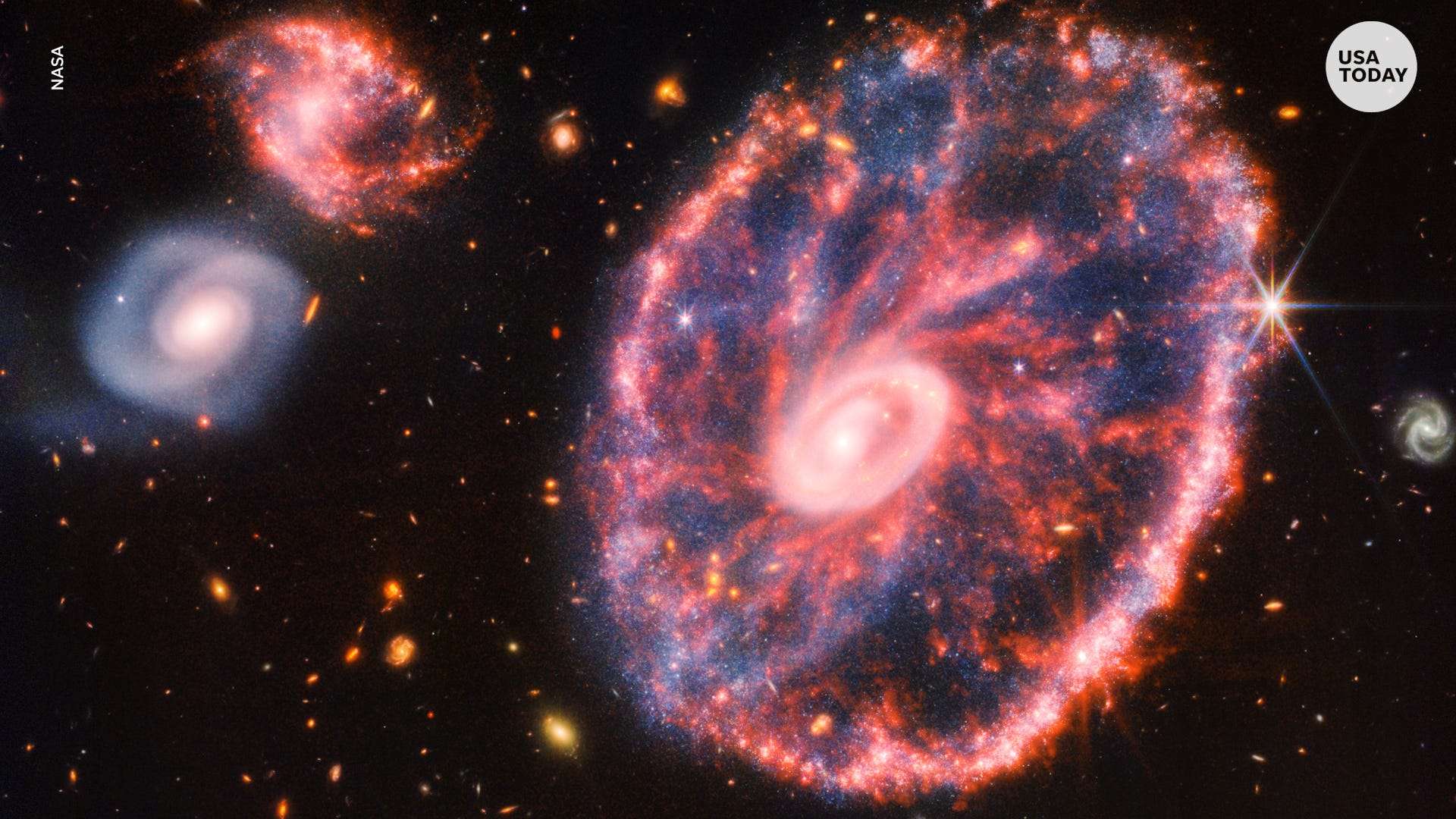Gases on exoplanet K2-18b can be produced by things besides aliens | Fact check

The claim: CO2 and methane detected on exoplanet by James Webb Space Telescope can only be produced by life
An Oct. 11 Facebook post (direct link, archive link) shows an image of Earth and another, larger planet beside it.
"This is K2-18b, a potentially habitable planet covered with oceans and about 2.6 times the size of Earth," reads the post's caption. "(James Webb Space Telescope) has just detected carbon dioxide and methane in its atmosphere which can only be produced by living beings."
The post was shared more than 300 times in less than three weeks.
More from the Fact-Check Team: How we pick and research claims | Email newsletter | Facebook page
Our rating: False
While the James Webb Space Telescope has detected CO2 and methane on K2-18b, these gases are regularly produced by non-living processes. The existence of liquid water oceans is possible on K2-18b, but their presence has not been documented, according to researchers.
K2-18b gases easily explained by non-living processes
K2-18b is an exoplanet − a planet positioned outside of Earth's solar system − located about 120 light-years from Earth. Signals of methane and CO2 were detected in the planet's atmosphere by the James Webb Space Telescope in 2023, but these gases can originate from diverse sources, researchers told Paste BN.
"CO2 is naturally prevalent in the giant gaseous disks of material where planets form around stars," said Knicole Colón, an astrophysicist at NASA. "It is predicted that carbon dioxide will be present in the atmospheres of most, if not all, planets."
Methane is also predicted to be common in the atmospheres of planets because of the environments in which they form, she said.
The physical properties of K2-18b make oceans a possibility, but oceans have not been documented on the planet despite a previous detection of atmospheric water vapor by the Hubble Space Telescope. Follow-up observations by James Webb have not detected water vapor, Colón told Paste BN.
More: Trump's campaign leans on climate change denial: Six misleading claims debunked
None of this means that K2-18b doesn't have oceans or life. The planet could theoretically harbor both, but the available evidence is limited and can be interpreted in different ways.
For instance, an early 2024 paper by a team of scientists at NASA and other institutions reported that K2-18b could be either a rocky planet with a thin hydrogen-rich atmosphere or a planet with a thick hydrogen-rich atmosphere (and no defined surface).
"Abundant methane and CO2 together in a thick, hydrogen-rich atmosphere is not particularly surprising," Joshua Krissansen-Totton, an author on the paper and astrobiologist at the University of Washington, told Paste BN. "Both can be produced by chemical reactions in a hot, deep atmosphere. (However), abundant methane and CO2 together in a rocky planet atmosphere is harder to explain without life, though there are certainly some known non-biological processes that would need to be ruled out."
While CO2 and methane together in the atmosphere of K2-18b can easily be explained without life, another compound that was possibly detected – dimethyl sulfide − is only known to be produced by life on Earth. However, this detection is far from confirmed and is influenced by how the data is analyzed, Colón said.
"Under some analysis procedures, the detection appears marginal, such that the James Webb data show potential evidence for a detection, while under other analysis procedures, there is no evidence for dimethyl sulfide," she said.
She also said there could theoretically be non-living processes that produce the compound on other planets. A recent preliminary paper reports evidence of dimethyl sulfide in space created by non-living processes.
K2-18b has roughly 2.37 times the radius of Earth (similar to the figure in the post), but almost nine times the mass, according to NASA.
Paste BN reached out to the Facebook user who shared the post for comment but did not immediately receive a response.
Our fact-check sources:
- Joshua Krissansen-Totton, Oct. 14, Email exchange with Paste BN
- Knicole Colón, Oct. 18, Email exchange with Paste BN
- NASA, accessed Oct. 28, K2-18 b
- NASA, Sept. 11, 2023, Webb Discovers Methane, Carbon Dioxide in Atmosphere of K2-18 b
- Sky & Telescope, April 11, The Planet K2-18b May Not Be Habitable After All
- ArXiv, Oct. 11, Evidence for Abiotic Dimethyl Sulfide in Cometary Matter
- The Astrophysical Journal Letters, Feb. 20, JWST Observations of K2-18b Can Be Explained by a Gas-rich Mini-Neptune with No Habitable Surface
- The Astrophysical Journal Letters, Oct. 9, Carbon-bearing Molecules in a Possible Hycean Atmosphere
- The Conversation, Sept. 13, 2023, Signs of life? Why astronomers are excited about carbon dioxide and methane in the atmosphere of an alien world
Thank you for supporting our journalism. You can subscribe to our print edition, ad-free app or e-newspaper here.
Paste BN is a verified signatory of the International Fact-Checking Network, which requires a demonstrated commitment to nonpartisanship, fairness and transparency. Our fact-check work is supported in part by a grant from Meta.